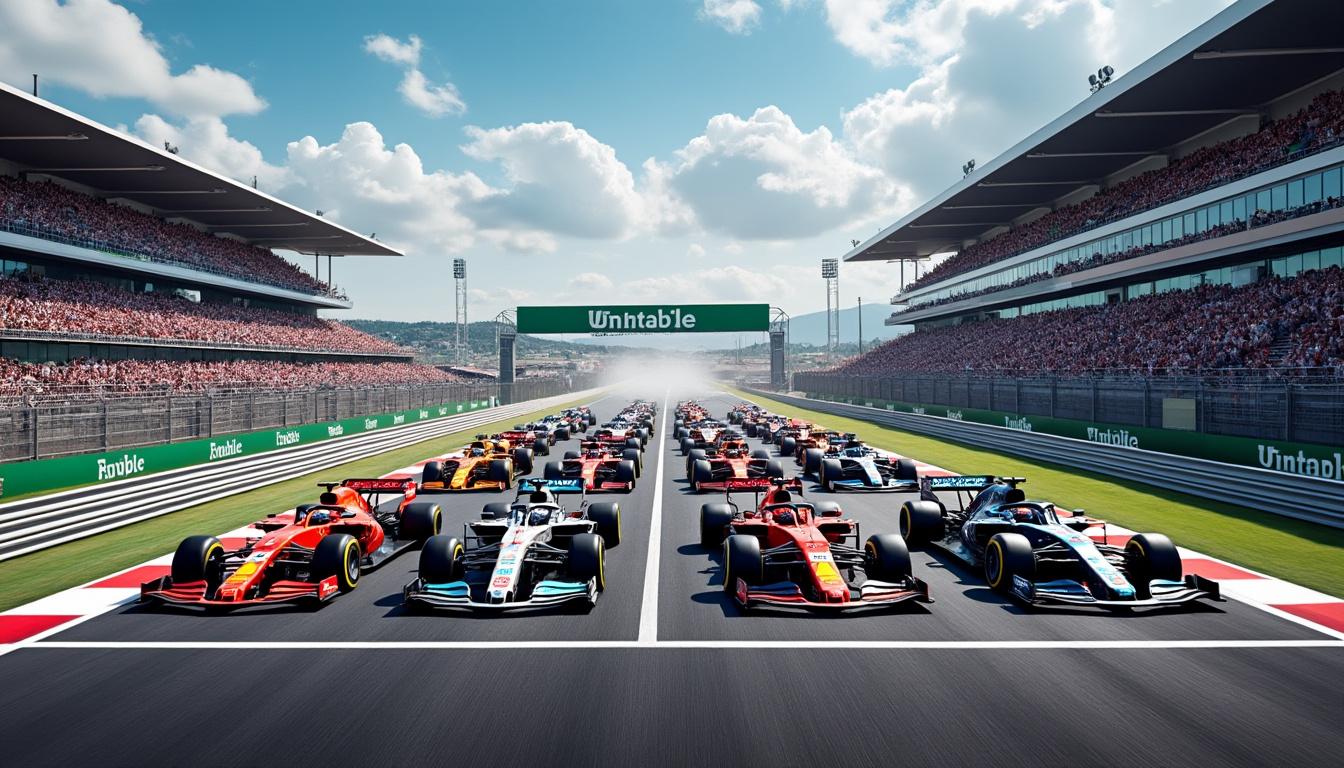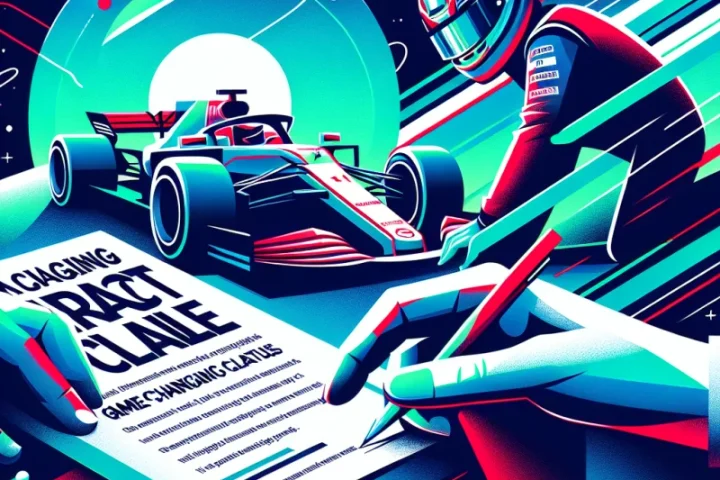Revving up the engines and pushing the boundaries of excitement, Formula 1 is gearing up for a thrilling evolution in its racing format. Under the visionary leadership of CEO Stefano Domenicali, the future of Sprint races is set to undergo a transformative shift, introducing innovative ideas that promise to redefine the essence of F1 competition.
This season has witnessed the emergence of the Sprint format, captivating fans and critics alike with its dynamic nature. From its inception at the 2021 British Grand Prix, the Sprint has evolved into a key component of six Grands Prix on the current calendar. As anticipation mounts, the concept of inverting starting grids has surfaced, drawing inspiration from successful strategies in Formula 2 and Formula 3. This proposal reflects a growing appetite within the F1 community for change and innovation. As deliberations among drivers, teams, and the FIA continue, the potential for significant adaptations looms large, with Domenicali spearheading a wave of creativity that could redefine the race weekend experience.


In recent years, Formula 1 has undergone significant evolution, notably with the introduction of sprint races. Originating during the 2021 British Grand Prix, the sprint format aims to inject added excitement by hosting shorter races on Saturdays to determine the starting grid for the main Sunday race. As the format gains traction—featured in six Grand Prix events this season alone—discussions surrounding its future have intensified, particularly with ambitions to revolutionize this thrilling aspect of the motorsport domain.
One of the driving forces advocating for change is Stefano Domenicali, the CEO of Formula 1, who has boldly proposed not only increasing the number of sprint races but also exploring the idea of inverted starting grids. This concept has sparked a mix of excitement and skepticism among teams, drivers, and fans. What implications would an inverted grid have, and how might it reshape the landscape of sprint racing in the premier racing series?
Exploring the Advantages of Expanding Sprint Races
The expansion of sprint races in the Formula 1 calendar offers several potential benefits. Firstly, it provides more action-packed weekends for fans and attendees, creating heightened anticipation and condensed excitement into a single day, elevating the overall viewing experience.
Additionally, sprint races could attract a wider audience by making the sport more accessible. With shorter races and engaging formats, casual viewers may find it easier to tune in regularly. The Formula 1 leadership believes that broadening the sprint race format could draw in crowds that might otherwise overlook traditional grand prix events, contributing to a more vibrant sport in terms of dynamics and fan engagement.
From a competitive standpoint, introducing more sprint races can enhance team strategies. Teams can experiment with different setups and tire strategies, diversifying their approach not just during main races but throughout the entire weekend. This injects excitement and keeps teams on their toes as they adapt to various conditions and racing formats.
As Domenicali emphasizes, “We are in discussions with drivers, teams, and the FIA to explore the possibility of applying this format to more events.” These discussions underscore the commitment to pushing for innovation while also seeking input from fans and stakeholders to gauge the community’s pulse.
How an Inverted Grid Would Reshape Racing Dynamics
The concept of an inverted grid could fundamentally transform race dynamics, requiring a significant strategic adjustment for drivers and teams. Essentially, an inverted grid would see the fastest drivers starting at the back of the field while slower competitors take the front positions in the sprint race. This approach deviates radically from tradition and draws inspiration from successful implementations in other motorsport categories like Formula 2 and Formula 3.
One of the most compelling outcomes of an inverted grid is the potential for increased overtaking opportunities. Top drivers who typically lead the pack would now have to navigate their way through the field, showcasing their skills and prowess in the process. This change could lead to thrilling on-track battles, captivating audiences and keeping them on the edge of their seats. The anticipated drama could become a key element that fans embrace, akin to the competitive rivalries seen in traditional sports.
However, challenges exist. There are concerns that the unpredictability of an inverted grid might hinder highly skilled drivers from dominating, potentially disappointing those deeply invested in the nuances of racing excellence. Some critics argue that a merit-based sport should reward skill and consistency, and introducing significant randomness could dilute that principle. Therefore, striking a balance between entertainment value and upholding tradition is paramount.
Fan Sentiments on Sprint Races and Grid Inversions
Understanding fan perspectives is essential for any modifications to the sprint format or grid mechanics. Audience feedback has been mixed, indicating that while many fans appreciate the excitement and novelty introduced by sprint races, others harbor reservations about the long-term consequences. Questions arise regarding whether such changes compromise the core values of Formula 1: a blend of speed and skill.
Domenicali has stressed the importance of feedback and the need to “dare to experiment” with race formats. He believes that gathering constructive criticism aids in refining the competition and can ultimately enhance the championship’s appeal. The challenge lies in striking a balance between innovation and honoring the rich traditions of Formula 1.
Domenicali’s receptiveness to fan opinions is pivotal. Through ongoing dialogue, fostering a culture of participation where fans feel actively engaged in shaping their beloved sport is crucial. This level of engagement ensures a deeper connection between fans, the sport, and its evolving format, paving the way for a future that resonates with new audiences while retaining loyal followers.
Assessing the Impact on the Formula 1 Schedule
While expanding the sprint race concept offers opportunities for excitement, careful consideration must be given to the overall structure of the Formula 1 calendar. With a current maximum of 24 races annually, increasing the number of sprint races without thoughtful planning could lead to congested schedules and diminished event quality.
Domenicali has emphasized that while more sprint races are desirable, the overall calendar should not exceed the current limits, as maintaining a pace that keeps both teams and fans enthused is essential. “With only 24 races per year, we must create captivating content,” he stresses, recognizing that balance is key. It’s about finding the sweet spot where quality surpasses quantity, ensuring each event holds significance.
A distinctiveness exists between Formula 1 and other motorsport series, with visibility playing a pivotal role in its allure. Events must captivate both seasoned fans and newcomers, offering unique experiences with every race.
Ultimately, the future of sprint races within the Formula 1 framework promises dynamism, reflecting the delicate balance between innovation, fan engagement, and the historical legacy that resonates with countless enthusiasts devoted to the sport.
For additional insights on recent sprint events and their comparison to traditional formats, explore articles like Quartararo’s concerns over Yamaha’s performance and Marquez’s Sprint victory, as Formula 1 navigates an exciting and transformative phase in its history.
The post Towards more sprint races in F1… with an inverted grid? appeared first on FormulaNerds.















